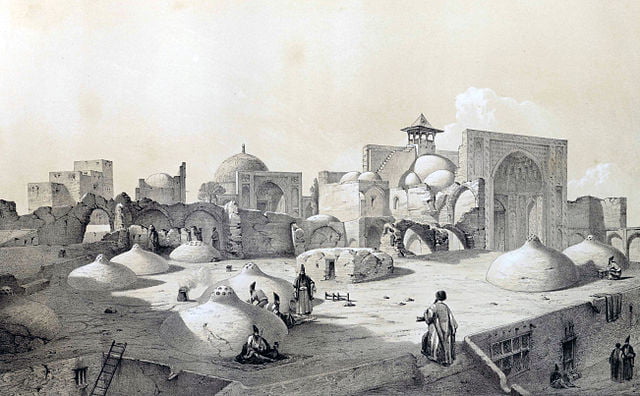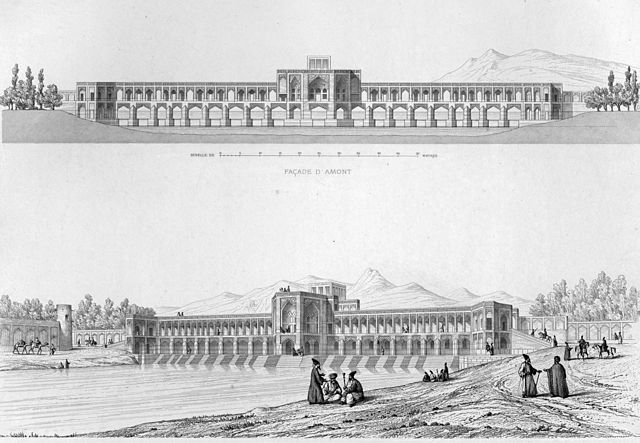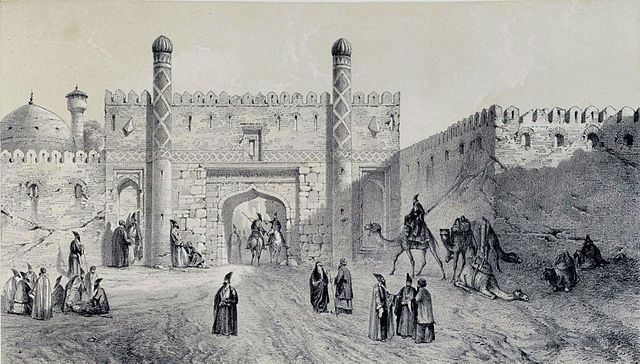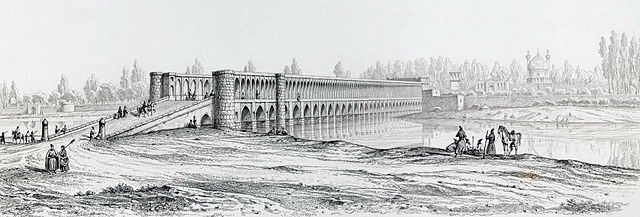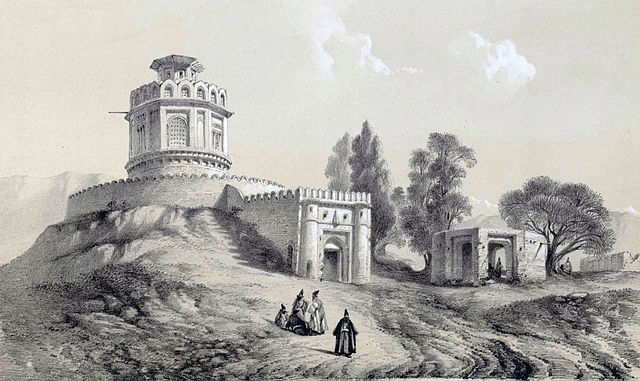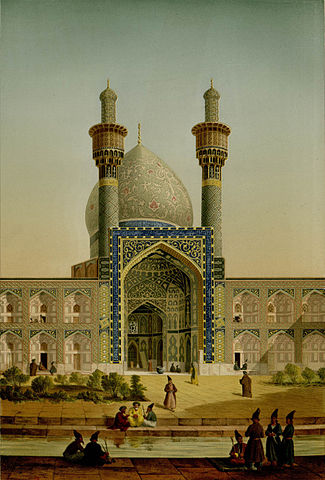Eugene Flandin (1809-1889) was a French artist and orientalist who is well-known for his paintings and drawings of Persia, which he created during his travels in the region in the 19th century. Flandin visited Persia twice, and during his travels, he produced many sketches, watercolors, and oil paintings depicting the landscapes, architecture, and people of Persia. Some of the cities he visited include Tehran, Isfahan, Tabriz, Shiraz, and Persepolis.
Eugene Flandin’s Travels in Persia
Eugene Flandin’s first trip to Persia was in 1839-1841 as part of a diplomatic mission led by the French consul in Tehran. During this trip, Flandin produced many paintings and drawings of Persian life and culture, including scenes of everyday life, landscapes, and architectural details. His works from this trip are known for their detailed and accurate depictions of Persian life and culture, as well as their artistic quality.
Flandin’s second trip to Persia was in 1850-1851 as a member of a scientific expedition sponsored by the French government. During this trip, Flandin produced many more paintings and drawings of Persia, including scenes of cities and historical sites. His works from this trip are also highly regarded for their historical and artistic significance.
Eugene Flandin’s Famous Paintings of Persia
Some of Eugene Flandin’s most famous paintings of Persia include “The Bazaar of Tehran,” “The Blue Mosque of Tabriz,” “The City of Isfahan,” and “The Tomb of Cyrus the Great.” These works, along with many others, are now housed in museums and private collections around the world.
“The Bazaar of Tehran” is a particularly striking painting that captures the vibrant and bustling atmosphere of the market. Flandin’s use of color and light brings the scene to life, and his attention to detail is evident in the intricate patterns and textures of the clothing and objects depicted.
“The Blue Mosque of Tabriz” is another notable work that showcases Flandin’s talent for capturing the beauty of Persian architecture. The painting depicts the mosque’s intricate tile work and domed ceiling, creating a sense of grandeur and awe.
Eugene Flandin and Pascal Coste
Eugene Flandin and Pascal Coste were both French artists and orientalists who traveled to Persia in the 19th century. They were both part of the same scientific expedition sponsored by the French government, which aimed to study the archaeology, history, and culture of Persia.
During their travels, Flandin and Coste collaborated closely, producing many sketches, watercolors, and oil paintings of Persian landscapes, architecture, and people. Flandin was primarily a painter, while Coste was an architect who specialized in Islamic architecture. Together, they produced a significant body of work that documented the art and culture of Persia during the 19th century.
Although Flandin and Coste worked closely together, they had different areas of expertise and artistic styles. Flandin’s paintings were known for their attention to detail and accuracy, while Coste’s architectural drawings were highly regarded for their technical precision and beauty. Despite these differences, their collaboration was instrumental in producing a rich and diverse record of Persian art and culture that is still studied and admired today.
Eugene Flandin’s Legacy
Eugene Flandin paintings of Persia are highly regarded for their historical and artistic significance, and they continue to be studied and admired by scholars, collectors, and art enthusiasts today. His works provide a valuable record of Persian life and culture during the 19th century, and they offer a glimpse into a world that has since undergone significant changes.
Eugene Flandin paintings of Persia are a testament to his talent as an artist and his passion for exploring the world around him. His works offer a unique perspective on Persian life and culture during the 19th century, and they continue to inspire and captivate audiences today.
Take part in our tours at reasonable rates to visit the cities Eugene Flandin visited 200 years ago.





